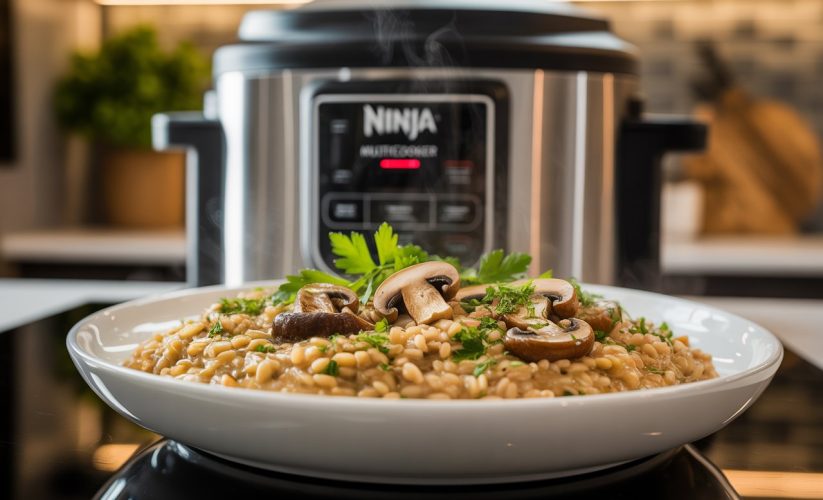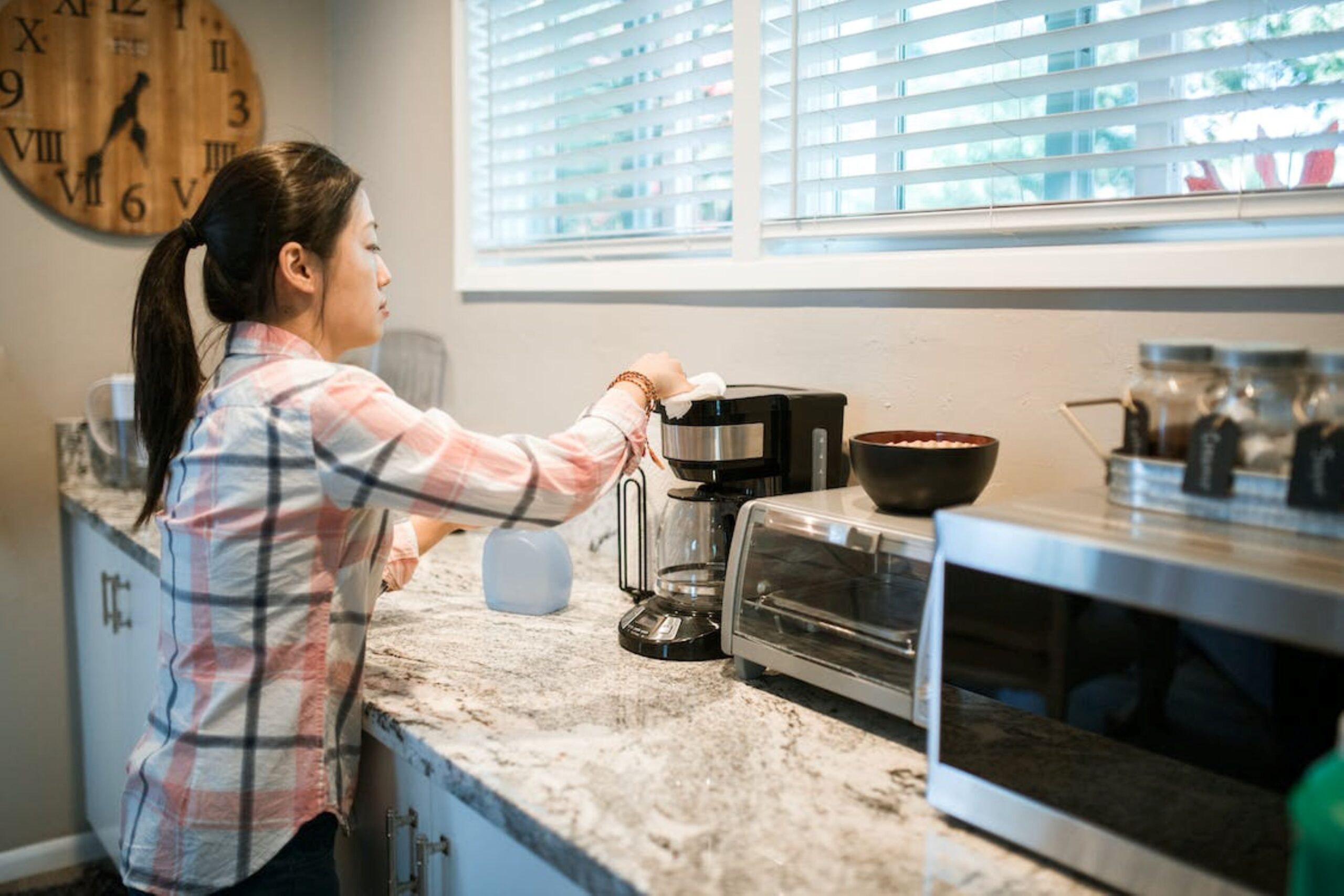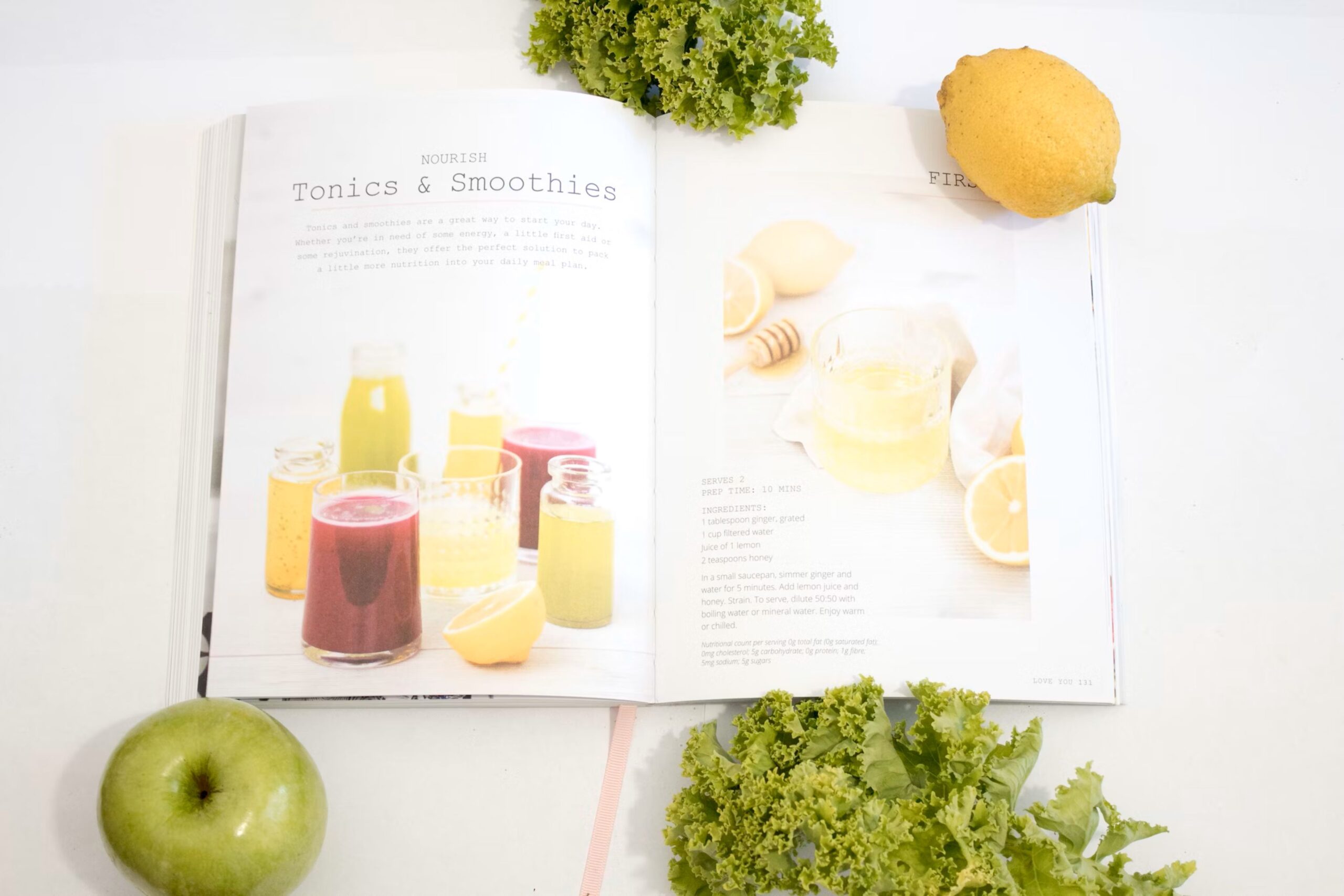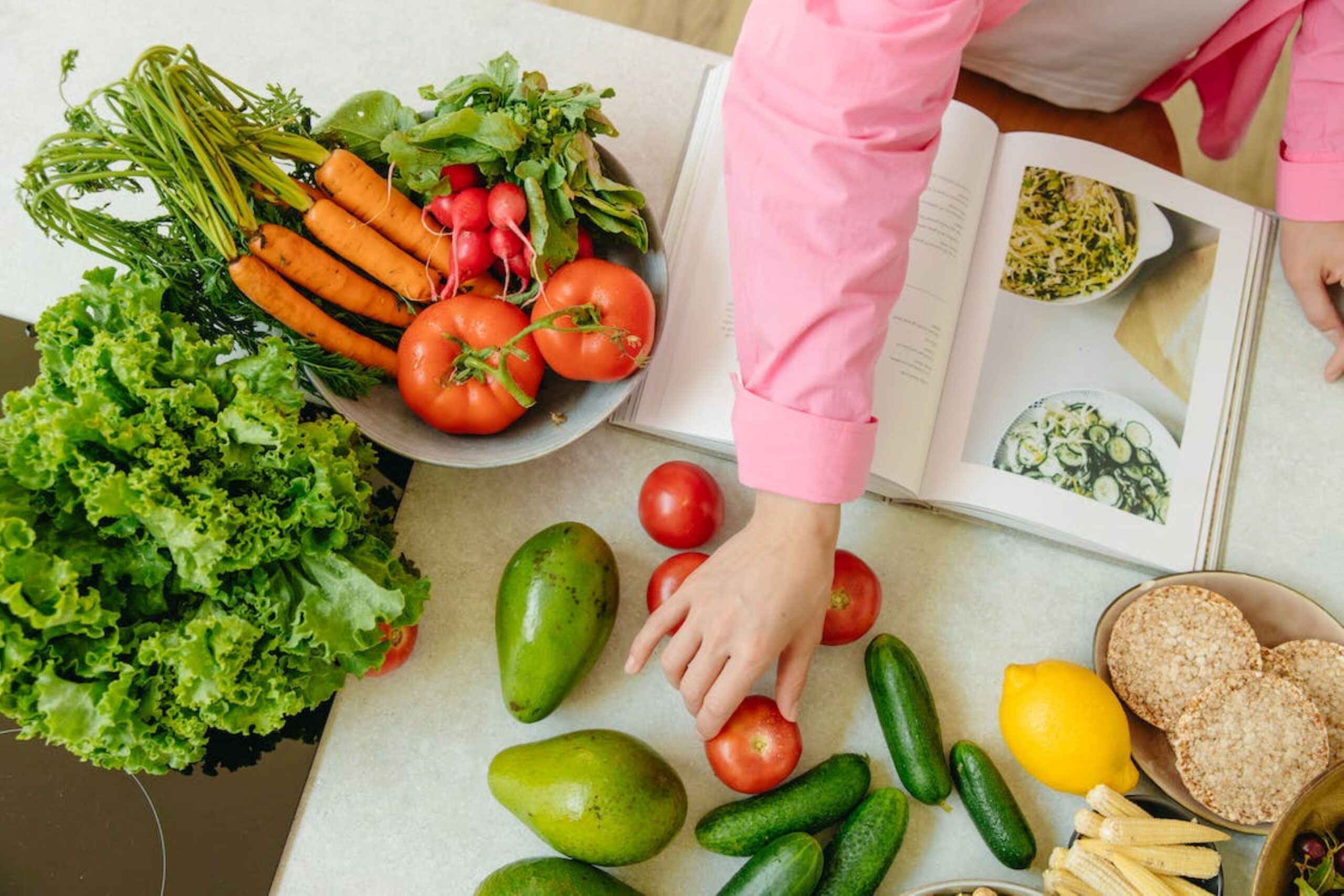
Ninja Multicooker Farro Risotto with Mushrooms Recipe
The kitchen fills with the earthy aroma of sautéing mushrooms, their golden edges crisping perfectly in the Ninja Multicooker. Steam rises as farro grains absorb rich broth, transforming from chewy kernels into creamy, restaurant-quality risotto. This isn’t just dinner—it’s the discovery of how modern cooking technology can turn ancient grains into weeknight magic without the constant stirring that traditional risotto demands.
“The beauty of farro lies in its ability to absorb flavors while maintaining structural integrity—it doesn’t surrender to mushiness like some grains, making it particularly forgiving for pressure cooking methods.”
— Journal of Culinary Science & Technology
Key Takeaways
- Farro creates nutrient-dense risotto with more protein and fiber than traditional Arborio rice, offering a hearty, nutty alternative that keeps you satisfied longer
- The Ninja Multicooker eliminates constant stirring through precise pressure and temperature control, reducing active cooking time from 30 minutes to just 5 minutes of prep
- Mushroom varieties transform the dish from simple to sophisticated, with each type bringing unique umami depths and textures to complement farro’s chewy bite
- One-pot cooking means minimal cleanup while maximizing flavor through layered cooking techniques that build complexity in a single vessel
- Meal prep becomes effortless as this risotto refrigerates beautifully for up to 4 days and reheats without losing its signature creamy texture
- REPLACES 12 COOKING TOOLS & APPLIANCES: This cooker replaces the need for a slow cooker, food warmer, nonstick pot, sauté pan, cast iron skillet, saucier, saucepan, stock pot, Dutch oven, roasting pan, bread maker, and utensil.
- SEAR & SAUTÉ DIRECTLY IN THE POT: Using the bottom heating elements, you are able to sear proteins and sauté vegetables right in the cooking pot—no need to transfer to the stovetop.
- REPLACES 14 COOKING TOOLS & APPLIANCES: This cooker replaces the need for a slow cooker, steam oven, food warmer, nonstick pot, sauté pan, cast iron skillet, saucier, steamer, saucepan, stock pot, Dutch oven, roasting pan, bread maker, and utensil.
- SEAR & SAUTÉ DIRECTLY IN THE POT: Using the bottom heating elements, you are able to sear proteins and sauté vegetables right in the cooking pot—no need to transfer to the stovetop.
- 11-IN-1 VERSATILITY: Master any meal with 11 cooking functions including Slow Cook, Sear/Sauté, Steam, Keep Warm, Sous Vide, Braise, Bake, Proof, Rice, Pasta, and Oats. This one-pot wonder replaces the need for a separate slow cooker, Dutch oven, steamer, and more.
- SMART COOK SYSTEM: Achieve the perfect doneness from rare to well-done with the integrated Smart Thermometer. Simply select your protein and desired outcome, and the PossibleCooker will monitor the temperature for you, ensuring perfect results every time.
- 14-in-1 VERSATILITY: Combi Meals, Combi Crisp, Combi Bake, Rice/Pasta, Sear/Sauté, Steam, Bake, Toast, Pizza, Slow Cook, Proof, Sous Vide, Air Fry, Broil.
- COMPLETE MEALS THAT COOK IN 15 MINS: Cook your proteins, veggies, and pasta or grains all at the same time and make a meal 50% faster than in a wall oven.
The Journey to Mastering Multicooker Farro Risotto
Picture standing at the stove on a Tuesday evening, wooden spoon in hand, adding ladle after ladle of broth while stirring rhythmically for forty minutes. Traditional risotto demands this meditation, this patience, this complete attention. But life moves faster now, and the Ninja Multicooker offers a bridge between culinary tradition and modern reality.
The transition from conventional risotto-making to multicooker methods wasn’t immediate. There was skepticism—could a machine truly replicate the creamy, al dente texture achieved through constant stirring? The answer revealed itself in layers, through trial and error, adjustments in liquid ratios, and understanding how pressure cooking fundamentally changes grain hydration.
Understanding Farro’s Unique Character
Farro brings personality to the risotto world that Arborio rice simply cannot match. These ancient wheat berries carry nutty undertones, a satisfying chew, and nutritional prowess that transforms comfort food into wellness food. Each grain remains distinct yet tender, creating texture contrast that makes every bite interesting.
Three varieties of farro exist—farro piccolo (einkorn), farro medio (emmer), and farro grande (spelt)—but for risotto, emmer farro strikes the ideal balance. It cooks to creamy perfection while retaining enough structure to feel substantial. The bran coating releases starches slowly, creating that coveted creaminess without disintegrating into porridge.
The learning curve involved understanding hydration ratios. Farro absorbs less liquid than Arborio rice under pressure, requiring careful measurement to avoid soup or paste. The sweet spot emerged after multiple attempts: a 2.5:1 liquid-to-grain ratio, adjusted slightly based on whether using pearled or semi-pearled farro.
Building Layers of Mushroom Flavor
Mushrooms aren’t just an ingredient in this dish—they’re the foundation of its soul. The Ninja Multicooker’s sauté function allows for proper caramelization before pressure cooking begins, a crucial step that many multicooker recipes skip in pursuit of speed.
Selecting Your Mushroom Symphony
The mushroom selection process transforms from overwhelming to exciting once you understand each variety’s contribution:
Cremini mushrooms form the base—affordable, reliable, with enough earthiness to ground the dish without overpowering farro’s subtle nuttiness. Their moisture content is moderate, allowing them to brown beautifully in the multicooker’s sauté mode without steaming.
Shiitake mushrooms add complexity and that distinctive umami punch that makes taste buds sit up and take notice. Remove the tough stems (save them for stock), slice the caps, and watch them melt into silky ribbons that weave through the farro.
Oyster mushrooms contribute delicate sweetness and velvet texture, their fan-shaped caps tearing easily into rustic pieces that catch pockets of creamy sauce.
The revelation came when combining fresh and dried mushrooms. Dried porcini, rehydrated in the cooking liquid, released concentrated essence that permeated every grain. Their soaking liquid became liquid gold—strained carefully to remove grit, then used as part of the broth base.
The Sauté Stage: Where Magic Begins
The Ninja Multicooker’s sauté function operates at temperatures comparable to stovetop cooking, crucial for developing those caramelized bits (fond) that create depth. Work in batches to avoid crowding—mushrooms need space to brown rather than steam.
This step tests patience. The temptation to rush, to pile all the mushrooms in at once, leads to pallid, waterlogged fungi that contribute little flavor. Instead, spread them in a single layer, resist stirring for the first few minutes, and listen for the sizzle that indicates proper heat.
Garlic and shallots join near the end of sautéing, their aromatics blooming in the mushroom-infused oil without burning. This timing matters—add them too early, and they carbonize before the mushrooms finish; too late, and their flavors remain raw and harsh.
Mastering the Pressure Cooking Phase
The transition from stovetop freedom to sealed pressure cooking felt initially like a leap of faith. No tasting, no adjusting, no visual cues—just trust in ratios and timing. The multicooker becomes a black box where transformations occur hidden from view.
Liquid Calculations and Flavor Building
Broth quality directly impacts the final dish. Homemade mushroom stock elevates the risotto to restaurant caliber, but quality store-bought versions work remarkably well. The key is tasting before cooking—if the broth lacks depth on its own, the finished risotto will too.
White wine adds acidity and complexity, its alcohol burning off during pressure cooking while leaving behind bright notes that cut through richness. Dry vermouth works beautifully as a substitute, offering herbaceous undertones that complement earthy mushrooms.
The discovery of adding a parmesan rind during pressure cooking changed everything. This Italian grandmother trick infuses subtle umami and saltiness throughout the farro, eliminating the need for excessive seasoning at the end. The rind softens during cooking—remove it before serving, scraping off any melted cheese to stir back into the risotto.
Timing and Pressure Release
Farro requires less pressure cooking time than expected—just 10 minutes at high pressure for pearled farro, 12 minutes for semi-pearled. The multicooker’s precision prevents overcooking that occurs easily on the stovetop when attention wavers.
The pressure release method significantly impacts texture. A natural release allows residual heat to continue cooking gently, creating creamier results but risking mushiness if the farro was already tender. A quick release halts cooking immediately, preserving more al dente texture but sometimes leaving the dish slightly soupy.
The compromise: a 5-minute natural release followed by a quick release. This brief resting period allows pressure to drop gradually while preventing overcooking, consistently producing farro that’s tender yet toothsome.
Finishing Touches: Transforming Good to Extraordinary
The moment the lid lifts reveals whether the ratios succeeded. Steam escapes, and there’s the risotto—looser than expected, almost soupy. This is correct. The magic happens in the stirring.
The Mantecatura: Stirring in Richness
Italian cooks call this final stage mantecatura—vigorously stirring in butter and cheese to create a creamy, flowing consistency. The motion isn’t gentle folding but assertive stirring that coaxes starch from the farro, emulsifying with fat to create lusciousness.
Cold butter, cut into cubes, goes in first. As it melts, the stirring motion distributes fat molecules throughout the liquid, creating a silky texture that coats each grain. This isn’t the time for olive oil—butter’s milk solids and emulsifying properties create richness that oil cannot replicate.
Parmesan follows, grated fresh rather than from a container where anti-caking agents prevent smooth melting. The heat from the risotto is sufficient to melt the cheese without clumping. As it incorporates, the risotto tightens slightly, reaching that ideal consistency where it flows slowly across the plate, finding its level without running like soup.
Fresh herbs—parsley, thyme, or chives—add brightness and color. Their fresh, grassy notes lift the earthy mushroom-farro combination, preventing heaviness. Torn rather than chopped, they release oils and flavor more gradually.
Seasoning with Precision
Salt and pepper adjustments happen now, after the parmesan’s saltiness has integrated. Taste critically—the dish should hover at the edge of too salty, as flavors will mellow slightly as it rests. Black pepper, freshly ground, adds bite that complements mushroom earthiness.
A squeeze of lemon juice brightens everything, its acidity cutting through richness and making the dish feel lighter than its calorie count suggests. Just a few drops—enough to add dimension without announcing citrus presence.
Overcoming Common Farro Risotto Challenges
The path to perfect multicooker farro risotto includes obstacles that initially seem like failures but become learning opportunities.
When Risotto Turns Too Thick
Farro continues absorbing liquid after cooking, especially if sitting before serving. The solution lives in reserved broth, warmed and stirred in tablespoon by tablespoon until reaching desired consistency. This rescue operation works even with leftover risotto, though it never quite returns to freshly-made fluidity.
The mistake often begins with insufficient liquid during pressure cooking. Unlike stovetop risotto where you can add more broth incrementally, multicooker risotto requires accurate initial measurements. Keeping detailed notes about liquid ratios for different farro brands helps dial in the perfect amount.
Preventing Mushy Texture
Overcooking happens easily when timings aren’t adjusted for farro type. Pearled farro, with its bran removed, cooks faster than semi-pearled or whole farro. The first batch might emerge as porridge, but this teaches the importance of checking package specifications and reducing cooking time accordingly.
Using the multicooker’s delay start function without adjusting for sitting time leads to overcooked results. If preparing in advance, undercook slightly—the risotto will continue softening as it sits, even without heat.
Addressing Bland Flavor
When the first bite disappoints, lacking depth and complexity, the culprit usually traces back to the mushroom preparation. Skipping the sauté step or using only fresh mushrooms without the concentrated punch of dried varieties results in one-dimensional flavor.
Building layers matters—sautéed fresh mushrooms, dried mushroom soaking liquid, quality broth, wine, parmesan rind during cooking, and final cheese and butter. Each layer adds dimension, creating complexity that makes diners pause and savor rather than simply consuming.
Managing Burn Warnings
The Ninja Multicooker’s burn protection sensor sometimes triggers if food sticks to the bottom during pressure cooking. This happens when insufficient liquid is present or when the bottom isn’t deglazed properly after sautéing.
The solution involves two steps: first, thoroughly scrape up all browned bits from the bottom after sautéing, using the liquid to dissolve stuck-on fond. Second, ensure at least 1.5 cups of liquid are present before sealing. If the burn warning appears, release pressure, check the bottom, add liquid if needed, and restart.
Variations and Seasonal Adaptations
Once the basic technique becomes second nature, the multicooker opens doors to endless variations that keep farro risotto exciting throughout the year.
Spring: Asparagus and Pea Farro Risotto
As markets fill with tender asparagus and sweet peas, mushrooms step aside for spring vegetables. Pressure cook the farro with vegetable broth and white wine, then stir in blanched asparagus and peas during mantecatura. Fresh mint and lemon zest brighten the dish, while goat cheese replaces half the parmesan for tangy creaminess.
The asparagus requires special handling—cut into 1-inch pieces, add the thick stalks during the last 2 minutes of pressure cooking, and stir in the tender tips raw during finishing. They’ll cook in the residual heat while maintaining vibrant color and slight crunch.
Summer: Tomato and Basil Farro Risotto
When tomatoes reach peak ripeness, they deserve starring roles. Use half broth, half crushed tomatoes during pressure cooking, creating a rosy-hued risotto with bright acidity. Cherry tomatoes, halved and stirred in at the end, provide bursts of sweetness.
Fresh basil goes in two ways—whole leaves during pressure cooking infuse the dish with aromatic oils, while fresh torn basil stirred in at the end adds vibrant color and pure basil essence. Fresh mozzarella, torn into pieces and stirred in until partially melted, creates creamy pockets that contrast beautifully with the farro’s chew.
Fall: Butternut Squash and Sage Farro Risotto
Autumn brings squash, and their natural sweetness pairs magnificently with farro’s nuttiness. Dice butternut squash into small cubes, toss with olive oil, and add during pressure cooking—they’ll soften perfectly in the multicooker alongside the farro.
Crispy sage provides textural contrast and aromatic intensity. After finishing the risotto, wipe out the multicooker, add butter on sauté mode, and fry whole sage leaves until crisp. These garnish the finished dish, adding drama and herbaceous notes that complement squash sweetness.
Winter: Wild Mushroom and Truffle Farro Risotto
Cold weather calls for indulgence, and truffle oil transforms mushroom farro risotto into special-occasion fare. Use a variety of wild mushrooms—chanterelles, hen of the woods, black trumpet—sautéing each type separately to respect their different cooking times.
White truffle oil (use sparingly) gets drizzled over individual servings rather than stirred into the pot, preserving its volatile aromatics. Garnish with shaved aged parmesan and additional sautéed mushrooms for a presentation worthy of celebration.
Meal Prep and Storage Strategies
The beauty of multicooker farro risotto extends beyond initial preparation into practical weekday meal solutions that don’t sacrifice quality.
Proper Storage Techniques
Risotto’s enemy is temperature—the danger zone between 40°F and 140°F where bacteria multiply rapidly. Cool risotto quickly by spreading it in a thin layer on a baking sheet before transferring to storage containers. This prevents the warm center from staying in the danger zone for hours.
Airtight containers preserve moisture and prevent the risotto from absorbing refrigerator odors. Glass containers work better than plastic for reheating, allowing for direct microwave use without concern about chemicals leaching from heated plastic.
Properly stored, farro risotto keeps for 4 days refrigerated. Beyond that, texture and flavor decline noticeably as the farro continues absorbing liquid and flavors dull.
Reheating Without Ruining Texture
The microwave works surprisingly well for reheating individual portions. Add a tablespoon of broth or water, cover loosely, and heat in 30-second intervals, stirring between each. The moisture prevents drying while gradual heating preserves creaminess.
Stovetop reheating offers more control. Heat gently over medium-low, stirring frequently and adding broth gradually until the risotto loosens to original consistency. This method allows for flavor adjustments—a bit more cheese, fresh herbs, or seasoning can revive refrigerated risotto beautifully.
Freezing Considerations
While not ideal, farro risotto freezes acceptably for up to 2 months. The texture changes slightly—farro becomes a bit softer, and the creamy consistency separates somewhat—but proper reheating can salvage much of the original quality.
Freeze in individual portions using freezer bags, pressing out air before sealing. Label with contents and date. Thaw overnight in the refrigerator, then reheat using the stovetop method with generous additions of broth to restore creaminess.
Nutritional Benefits and Dietary Adaptations
Farro risotto offers surprising nutritional advantages over traditional rice-based versions, making indulgence feel slightly less guilty.
Farro’s Nutritional Profile
Whole grain farro provides substantial protein—about 8 grams per serving compared to white rice’s 4 grams. This protein content makes the dish more satiating, preventing the blood sugar spike and crash associated with refined grains.
Fiber content impresses too—roughly 5 grams per serving supports digestive health and contributes to that lasting fullness that prevents grazing an hour after dinner. The low glycemic index means sustained energy rather than the roller coaster of refined carbohydrates.
Vitamins and minerals abound—magnesium for muscle and nerve function, iron for oxygen transport, B vitamins for energy metabolism. Ancient grains weren’t just trendy buzzwords; they’re genuinely nutritious foundations for modern meals.
Making It Vegan
Traditional risotto’s creaminess relies on butter and parmesan, but plant-based alternatives create surprisingly satisfying results. Nutritional yeast provides umami and cheese-like flavor, while cashew cream adds richness that rivals dairy.
The technique requires slight adjustment—use olive oil for sautéing instead of butter, add nutritional yeast during pressure cooking for deeper flavor integration, and finish with cashew cream and additional nutritional yeast. The result won’t taste identical to dairy versions, but it stands proudly on its own merit.
Gluten-Free Alternatives
Farro contains gluten, eliminating it for those with celiac disease or sensitivity. However, the multicooker technique translates beautifully to gluten-free grains that mimic farro’s texture and nutritional profile.
Sorghum offers similar chewiness and nutty flavor, though it requires longer cooking time—about 15 minutes under pressure. Brown rice works but lacks farro’s personality, while quinoa cooks too quickly and turns mushy easily. The best substitute might be pearl barley, which contains gluten but less than farro, offering middle ground for those with sensitivity rather than celiac disease.
The Broader Impact of Multicooker Mastery
Learning to create restaurant-quality farro risotto in the Ninja Multicooker represents more than a single recipe mastered—it’s a gateway to confident home cooking that fits modern life’s demands.
Time Freedom and Mental Space
The hours previously spent stirring at the stove now belong to other pursuits—helping with homework, catching up on reading, simply resting after a long day. The multicooker handles the meditation of cooking, freeing mental space for presence with family or much-needed solitude.
This shift transforms cooking from obligation to opportunity. Dinner preparation becomes enjoyable when it doesn’t require constant attention, when you can start the multicooker and walk away knowing dinner will be ready in exactly 25 minutes without intervention.
Building Confidence Through Success
Each successful batch of farro risotto builds cooking confidence that extends beyond this single dish. Understanding how pressure cooking affects grains translates to successfully preparing other whole grains—wheat berries, steel-cut oats, wild rice blends. The principles remain consistent even as ingredients change.
This confidence ripples outward into more adventurous cooking. If you can master farro risotto’s seemingly complex technique, what else becomes possible? The multicooker stops being an intimidating gadget and becomes a trusted tool that expands rather than limits culinary horizons.
Connecting with Food Traditions
Using modern technology to prepare ancient grains creates interesting tension between tradition and innovation. Farro sustained civilizations for millennia, yet the multicooker represents cutting-edge cooking technology. Bridging these worlds feels satisfying, honoring heritage while embracing progress.
This connection to food history adds meaning to meals. Each bowl of farro risotto links to countless generations who cultivated, harvested, and prepared these grains. The multicooker doesn’t erase that history; it makes participating in it more accessible for those navigating hectic modern lives.
Entertaining with Multicooker Farro Risotto
Dinner parties once felt daunting because risotto requires last-minute preparation and constant attention. The multicooker changes this calculus entirely, making impressive dishes achievable even when hosting.
Timing for Seamless Service
Start the multicooker 30 minutes before planning to serve, allowing time for natural pressure release and finishing touches. Guests can arrive and enjoy appetizers while the risotto cooks unattended. When ready to serve, perform the mantecatura with guests watching—it becomes theater, showing effort and skill while actually being quite simple.
This timing flexibility reduces hosting stress dramatically. No more choosing between socializing with guests and standing at the stove. No more cold appetizers because dinner ran late. The multicooker creates breathing room that makes hosting enjoyable rather than anxiety-inducing.
Scaling Portions
The Ninja Multicooker’s capacity allows for substantial batches—up to 6 servings in an 8-quart model without crowding. The pressure cooking method works better with volume than small batches, making it ideal for entertaining.
For larger gatherings, prepare two batches rather than trying to exceed capacity. The second batch cooks while guests enjoy first courses, arriving at the perfect moment for second servings or late arrivals.
Presentation Strategies
Farro risotto’s rustic elegance needs minimal fussing to look impressive. Serve in wide, shallow bowls that showcase the risotto’s creamy consistency and allow for artful garnishing. A drizzle of quality olive oil creates attractive sheen, while microgreens or herb sprigs add color and freshness.
For drama, bring the multicooker pot to the table for final stirring and serving, family-style. This communal approach feels warm and inviting, perfect for casual entertaining where connection matters more than formality.
Continuing the Journey
Mastering Ninja Multicooker farro risotto with mushrooms isn’t a destination but a starting point for ongoing culinary exploration. Each batch teaches something new—a slight timing adjustment, a different mushroom combination, a garnish that elevates the dish unexpectedly.
The beauty lies in the forgiving nature of the technique. Unlike delicate soufflés or temperamental sauces, farro risotto tolerates experimentation. Try different broths, swap vegetables seasonally, adjust richness levels to suit preferences. The multicooker’s consistency provides a reliable foundation for creativity.
Questions worth exploring: What happens with smoked mushrooms? Could miso paste add umami depth? Would caramelized onions create sweetness that balances earthiness? Each question leads to kitchen experimentation that deepens understanding and expands repertoire.
The multicooker sits ready for the next adventure, patient and capable, waiting to transform simple ingredients into comfort and nourishment. The farro waits in the pantry, these ancient grains ready to absorb new flavors, new techniques, new stories.
Embracing Imperfection and Growth
Every batch won’t be perfect, and that’s perfectly fine. Some evenings the risotto will be slightly too thick, other times a bit soupy. Mushrooms might brown unevenly, or the seasoning might need last-minute adjustment. These aren’t failures—they’re data points that refine technique over time.
The journey with farro risotto mirrors larger life lessons about process and patience. Quick fixes and shortcuts have their place, but truly satisfying results come from understanding fundamentals, learning from mistakes, and gradually building skill through repetition.
Share these imperfect batches with people who matter. Let them taste the experiments, the slight failures alongside the successes. The willingness to serve imperfect food creates intimacy and authenticity that polished perfection cannot achieve. It says, “I’m learning, growing, trying new things, and I want to share this journey with you.”
The Ninja Multicooker makes this experimentation accessible by removing many traditional barriers—the constant stirring, precise timing, extensive cleanup. It democratizes techniques once reserved for trained chefs or home cooks with abundant time. Anyone can now create food that nourishes both body and spirit, building confidence and capability one batch at a time.
Conclusion
The path from intimidation to mastery of Ninja Multicooker farro risotto with mushrooms winds through patience, experimentation, and gradual understanding. What once seemed complex—pressure cooking whole grains to creamy perfection—becomes approachable when broken into manageable steps supported by reliable technology.
This dish represents more than dinner; it’s a commitment to feeding yourself and others with intention, choosing nutrient-dense ingredients prepared in ways that honor both tradition and modern reality. The earthy mushrooms, nutty farro, and creamy finish create comfort that extends beyond physical nourishment into emotional satisfaction.
The multicooker becomes a partner in this journey, handling the technical precision while you focus on the creative and relational aspects of cooking. It’s not about replacing skill with technology but about using technology to make skill development more achievable for those balancing multiple demands on their time and energy.
Every bowl of farro risotto carries within it the potential for connection—with heritage grains that sustained ancient peoples, with seasonal ingredients that link to natural rhythms, with those who share the meal and the care it represents. The multicooker simply makes that connection more accessible, more frequent, more achievable on ordinary weeknights when magic feels hard to conjure.
Start where you are, with what you have. A Ninja Multicooker, a bag of farro, mushrooms from the grocery store, and willingness to experiment. The first batch might not be perfect, but it will be nourishing. The next will be better. Eventually, muscle memory takes over, and what once required intense focus becomes intuitive, freeing mental space to enjoy the process and the people it feeds.
The journey continues with each batch, each variation, each shared meal. The risotto becomes a vehicle for exploration, creativity, and care—proof that modern cooking tools can enhance rather than replace the soul-satisfying work of feeding ourselves well.
Frequently Asked Questions
Can I use regular Arborio rice in the Ninja Multicooker instead of farro?
Yes, Arborio rice works beautifully in the Ninja Multicooker, though timing adjustments are necessary. Reduce the pressure cooking time to 6 minutes for Arborio rice, as it cooks faster than farro and can quickly become mushy. Use a 3:1 liquid-to-rice ratio instead of the 2.5:1 ratio for farro. The mantecatura finishing step remains identical, stirring in butter and parmesan to create traditional risotto creaminess. Keep in mind that Arborio rice will have a softer texture than farro and lacks the whole grain nutritional benefits, but it delivers authentic risotto flavor and texture.
How do I prevent the multicooker from displaying a burn warning during risotto preparation?
Burn warnings typically occur when food sticks to the bottom or when insufficient liquid is present. To prevent this, thoroughly deglaze the pot after sautéing mushrooms and aromatics—use wine or broth to scrape up all browned bits stuck to the bottom. Ensure you’re using at least 1.5 cups of liquid for pressure cooking, and avoid using thick sauces or tomato paste directly on the bottom without sufficient liquid. If you receive a burn warning mid-cycle, release pressure immediately, check the bottom for stuck food, add more liquid if needed, and restart the pressure cooking cycle. Using the multicooker’s sauté function at medium rather than high heat also helps prevent excessive sticking.
What’s the best way to achieve extra creamy texture without adding excessive butter or cheese?
Several techniques create creaminess without relying solely on dairy. First, stir vigorously during mantecatura to release starches from the farro, which naturally thicken and emulsify the liquid. Add small amounts of the starchy cooking liquid back into the risotto if it’s too thick, as this liquid contains dissolved starches that contribute to creaminess. For plant-based options, cashew cream or blended silken tofu add richness without dairy. Cooking a parmesan rind during pressure cooking infuses subtle creaminess throughout. Finally, ensure you’re using high-quality broth with natural gelatin content, which creates silky texture—bone broth works particularly well for this purpose.
Can I prepare farro risotto completely in advance for entertaining?
Partial advance preparation works better than completing the dish entirely. Prepare the risotto through the pressure cooking stage up to 2 hours before serving, then release pressure and keep it covered. About 10 minutes before serving, gently reheat on the sauté function with additional broth to loosen, then perform the mantecatura with butter and cheese. This approach preserves optimal texture better than fully finishing and reheating. Alternatively, pressure cook the farro in plain broth the day before, spread it to cool, and refrigerate. When ready to serve, reheat the cooked farro with sautéed mushrooms, wine, and additional broth, then finish as usual. This method requires more time on serving day but produces superior texture compared to fully reheating finished risotto.
Why does my farro risotto sometimes turn out soupy even when I follow measurements exactly?
Several factors affect final consistency beyond liquid measurements. Different farro brands absorb varying amounts of liquid depending on how they’re processed—pearled farro absorbs less than semi-pearled or whole farro. The moisture content of mushrooms also impacts results; very fresh mushrooms release more water during cooking than older, drier ones. Altitude affects pressure cooking times and liquid absorption rates. Finally, the timing of when you check the risotto matters—it will appear soupy immediately after pressure release but thickens significantly during the mantecatura and as it sits. If your risotto consistently turns out soupy, reduce liquid by 1/4 cup increments until you find the right amount for your specific farro brand and multicooker model. Keep detailed notes to replicate success.
Last update on 2025-11-28 / Affiliate links / Images from Amazon Product Advertising API
*We may earn a commission for purchases made using our links. Please see our disclosure to learn more.









